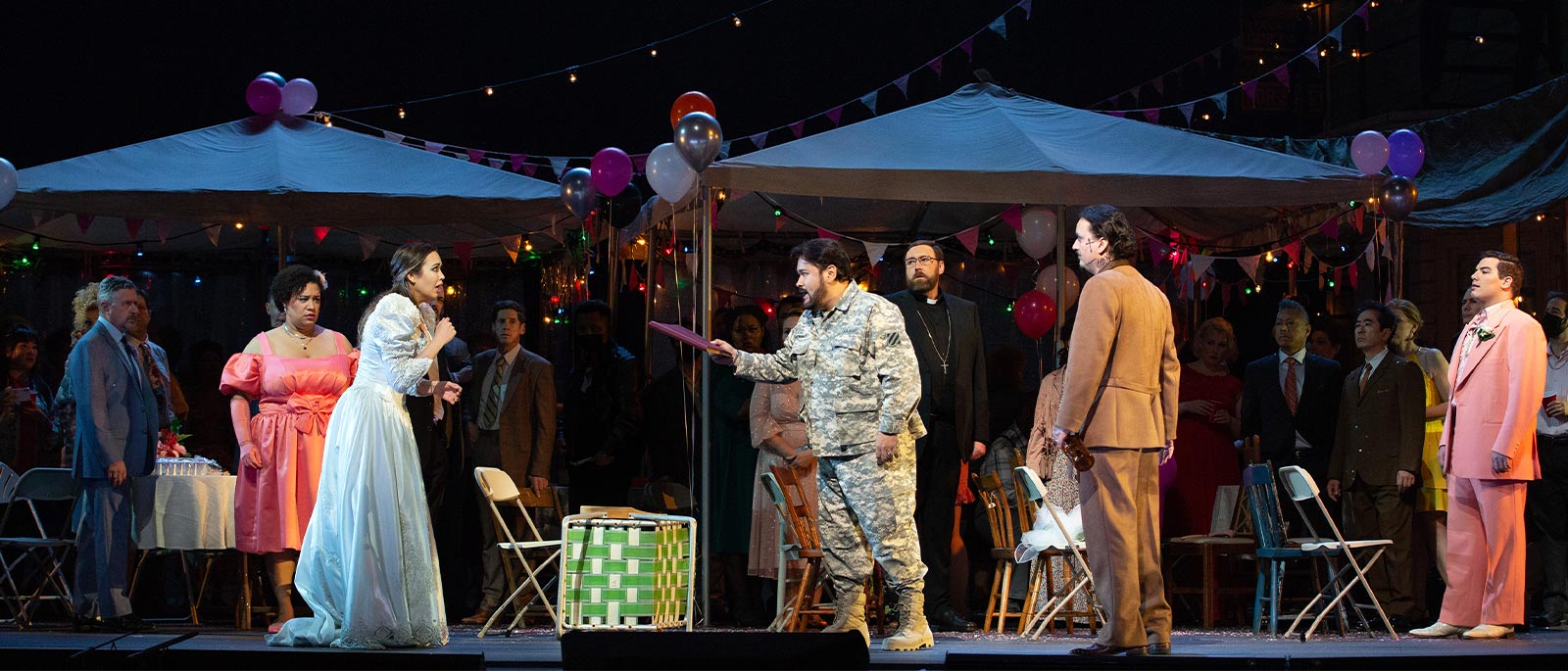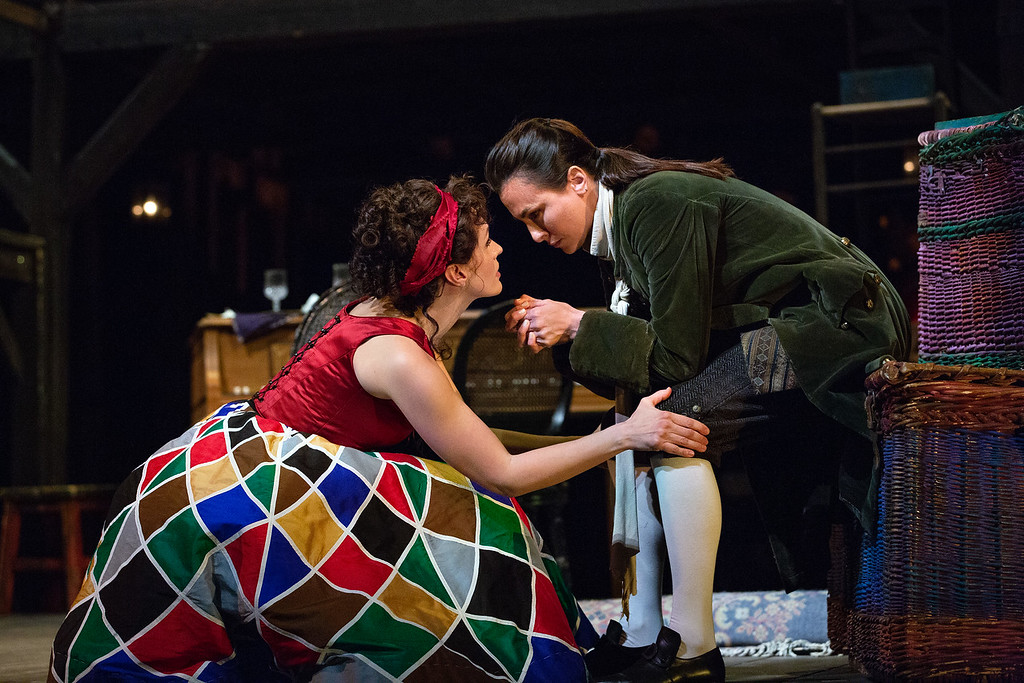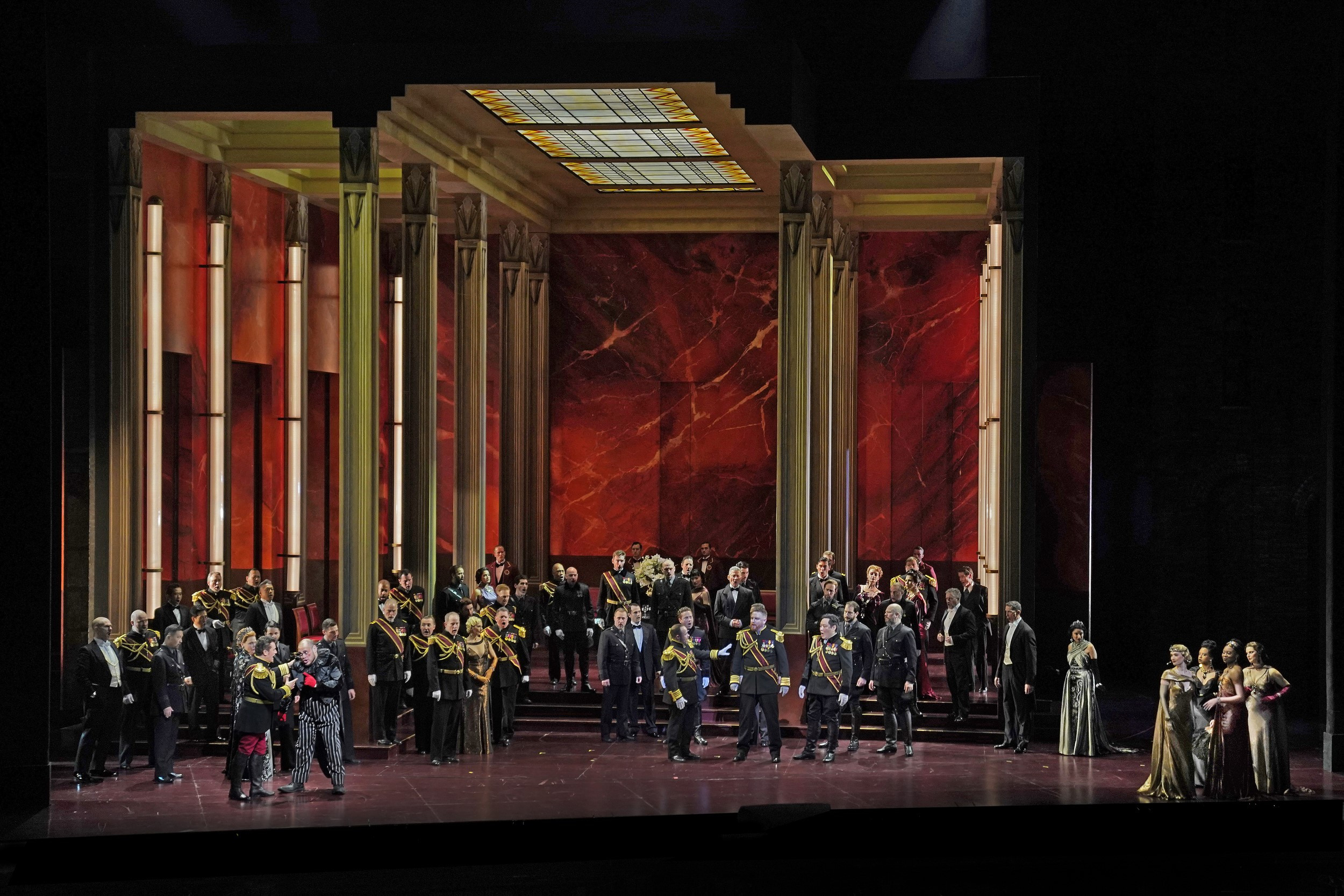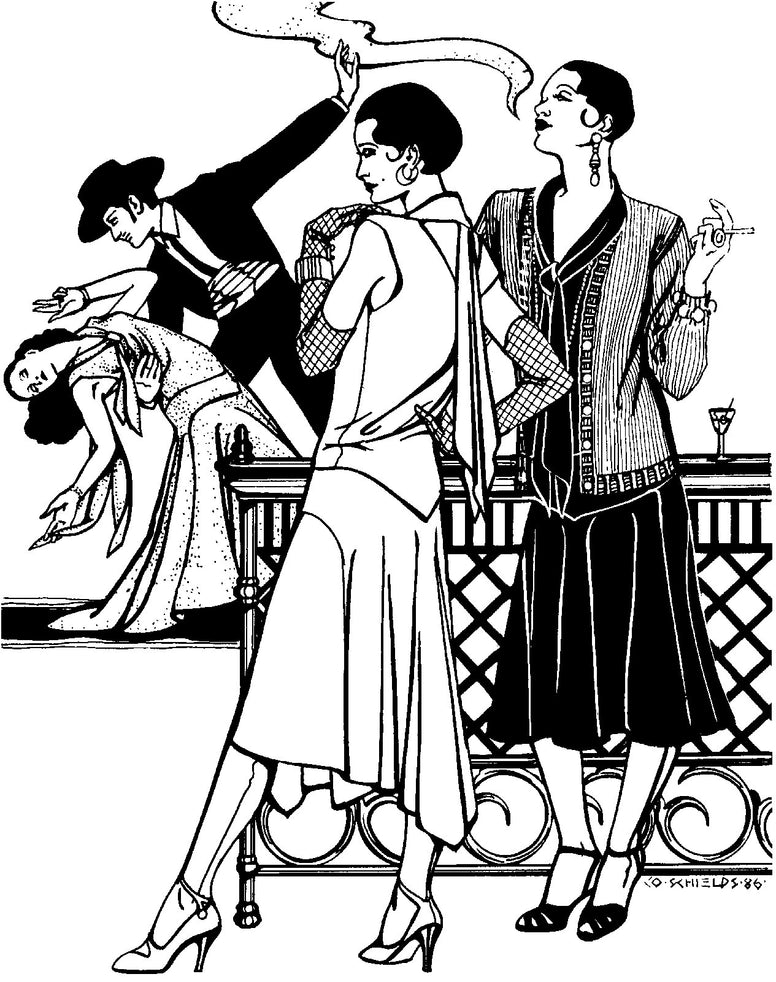You read that right: my largest sewing project to date was recently featured in P.E.O.’s magazine, The Record ! Take a look at the published article below…
In a “behind the scenes” peek, I thought it would be interesting to share some parts of the process of how this gigantic endeavour came to life.

How It All Began
I conceived the idea when the timing was right. With the Met still closed in early 2021 and no operas for which to design costumes, I needed something to occupy my time and also wanted a new challenge of working with different body shapes and sizes. Could I accomplish this mammoth project ? I pondered. After searching for patterns and fabrics while tallying prices, I felt the goal was doable. My mind was made up, so I called my chapter’s president and treasurer to run my grand scheme by them. At the March business meeting, I pitched the idea to the entire chapter, complete with cost analysis sheets, lists of materials needed, and samples of prospective fabrics to be used. The response was a tsunami of yeses. My sisters were “game” for anything !

Pattern Selection
Researching the styles from 1869 was the first step in formulating my plan. From my experience with opera and historical costuming, I had plenty of resources for specialized pattern companies. Ultimately, I chose to use Black Snail Patterns for the bodice, Truly Victorian Patterns for the skirt, and Laughing Moon Patterns for the hoopskirts, bustle pads, and the chemisettes. Each pattern was selected based on its finished garment style and how well they could be adapted to suit the Founders’ official portraits.



The Undergarments
It was absolutely crucial to construct the supportive undergarments of the outfits first ! Without a well fitting hoopskirt and bustle pad, the skirts could not be measured correctly. In the spirit of thriftiness and the need to maintain a strict budget, I thought it would be ingenious to use polyethene plumber’s tubing for the hoops instead of real steel hooping. After all, I had seen blogs of people making hoopskirts out of hula hoops and similar items. But as you can tell, that didn’t work out.


Maybe for a topsy-turvy, whimsical costume, this curlicue tubing would have been a winner. But for my historical ensembles, I had to break with the budget and buy steel hooping… much better !


With everyone fitted to a comfortable size, we moved onto the skirts, which were much less tedious than threading steel boning through ribbon channels. In May, I gave a demonstration of the progress that had been made to my chapter sisters at one of our regular meetings.

The hoopskirts had not yet been outfitted with crinoline mesh so the tunnels of steel were visibly apparent.

The skirt even had a pocket on the right side !

The Bodices
The Black Snail bodice pattern was historically accurate. Too accurate. Designed with the corseted body in mind, I knew I would have to make alterations since I had promised my models that they would NOT have to wear a corset, but also for the sake of convenience. Who would want to fasten all those itty bitty buttons down the front when the need for speed in dressing (and undressing) was of utmost importance ? One of the first changes made was to close the bodices with Velcro at the front. But that was just the tip of the iceberg !

Lynne’s Alterations
Out of all my models, I had the most challenging time fitting Lynne, who played Ella Stewart. While the pattern fit perfectly at the waist and bust, I could not manage to close the bodice at the neck, no matter how I finagled with the seams. Anne, who portrayed Mary Allen and was my invaluable “sous sewer,” thought inserting a small gore at the center back seam would add enough length for the neckline to meet at the front.

Nope !
Together, we toyed with ideas of substitutions, but nothing seemed to work. Then I had a “lightbulb” moment: just recently, I had taken a virtual fit and sew blouse class with Katrina Walker and recalled how she demonstrated a sleeve alteration using the “slash and spread” method. Taking what I learned in class, I applied it to the upper front of Lynne’s bodice.


A preliminary fitting showed promise. I then carried over the same adjustments to the paper pattern…

…and almost cried from ecstatics when Lynne tried on the new bodice. It was a perfect fit. Thank you, Katrina !

Other embellishments were needed in order for Lynne’s outfit to look spiffy. Since Ella Stewart’s portrait showed contrasting green appliques at the clavicles, Anne and I decided to continue with the color blocking theme and added dark green bands at the skirt and sleeve hems and a decorative yoke piece at the back waist. Lynne’s costume was easily classified as “Most Unique.”


Covid Scare
There was a near catastrophe when my original Suela Pearson came down with Covid just one day before our rehearsal and three days before the actual Founders’ Day event ! With hurried hands, Anne and I went to work to completely alter the costume in order to fit the new model. Miraculously, our skills paid off and the new amended ensemble was completed in time. And the best part ? No one knew a thing !

Showtime !
In an ordeal that spanned 10 months and required over 120 yards of fabric, I was able to accomplish the magnanimous feat with the ready help of my chapter sisters. When all the hard work was achieved, our chapter performed its P.E.O. themed fashion show to the local reciprocity group, showcasing each of the seven Founders’ style based on their original portraits.
Written into the narrated script was an “underwear demo,” which was designed to allow the audience a glimpse into how a lady would have started her dressing routine during the time period. That task fell to me. Remember what I had promised my models ? NO CORSETS !!


After strolling around the room in my “underwear,” it was now time for the models to make their appearance… Without further explanation, here are our seven Founders !
Hattie Briggs


Alice Coffin


Ella Stewart


Suela Pearson


Franc Roads


Alice Bird


Mary Allen


Each costume was as unique as the model wearing it and we were all so proud to honor our Founders in such a special way.



Thank Yous
“Style From the Stile: A Tribute to 1869 Fashion and the Founding of the P.E.O. Sisterhood” was a monster success, both with the local chapters and beyond. Through social media postings and publications, the show found its way to international acclaim. But the project would never have been possible without the enthusiastic and steadfast support of my chapter sisters. Nearly every member had a part ─ from covering and hand sewing buttons, to help with backstage dressing and stage directing. And a special thanks goes to Anne, who cut out every single piece of fabric !

As sisters, we bonded through the trials and triumphs of the project and left an indelible mark on Founders’ Day history.
The P.E.O. Founders were remarkable women. The ladies of Chapter CD are quite the same.
Toi, Toi, Toi,
Mary Martha





































































































